- Home
- Encyclopedia
- Horses For War: A Market For Wyoming Stockmen
Horses for War: A Market for Wyoming Stockmen
The bronc, "a keen-lookin' bay wild as a rabbit," began bucking as soon as Floyd Bard mounted. It bucked its way up a Sheridan, Wyo. alley by the Bucket of Blood Saloon, then across Main Street and up to the O'Mare grocery store, which had a big glass door.
An accomplished rider, Bard stayed in the saddle even after the horse struck and broke the bridle with a front foot. He figured that if the horse had kicked out the door, it would have cost him $50 to replace—exactly $47.50 more than his fee for riding the horse in the first place.
In the late summer of 1900, Bard had been hired as a wrangler by Montana rancher Grant Dunning, who was buying horses for William and Malcolm Moncreiffe. These brothers, sons of Sir Thomas Moncreiffe of Perthshire, Scotland, owned a ranch about four miles from Big Horn, Wyo. on Little Goose Creek southwest of Sheridan. The Moncreiffe brothers had contracted with the British government to supply thousands of horses for the Boer War, in South Africa.
The Boer War boom was the first of three waves of such military horse sales that ebbed and flowed through Wyoming for more than 30 years. The next two were World War I and the U.S. Army Remount project, which Congress began funding in 1921.
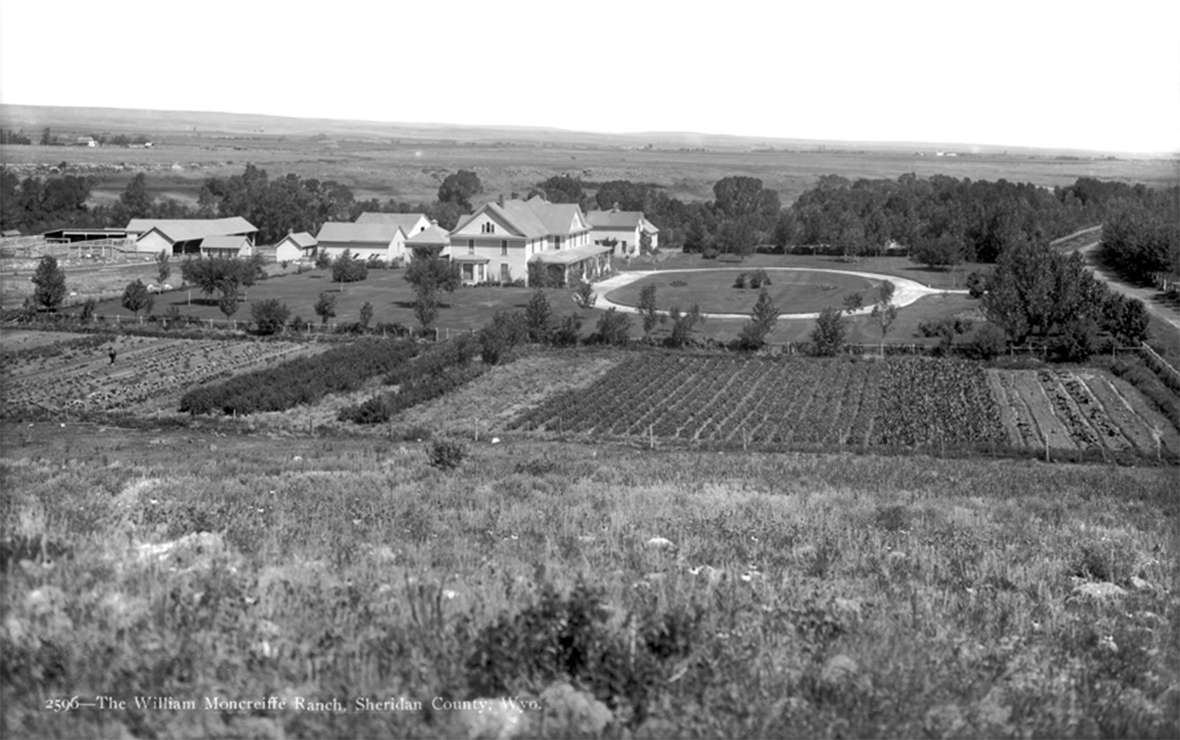
The Boer War
By 1897, or perhaps before, horsemen in the United Kingdom and perhaps continental Europe, too, had found that Wyoming horses possessed exceptional strength, stamina and wind. Bought for polo in the U.K. from Malcolm Moncreiffe at Tattersalls—a British auction house—and through British polo expert and horse buyer T.B. Drybrough, Wyoming-bred horses brought $45 to $100 "in the rough." Almost certainly, some British polo players were also military men, and this, along with some who, like Drybrough, knew Malcolm Moncreiffe, may have helped to spread the word that Wyoming was one of the best places to purchase war horses.
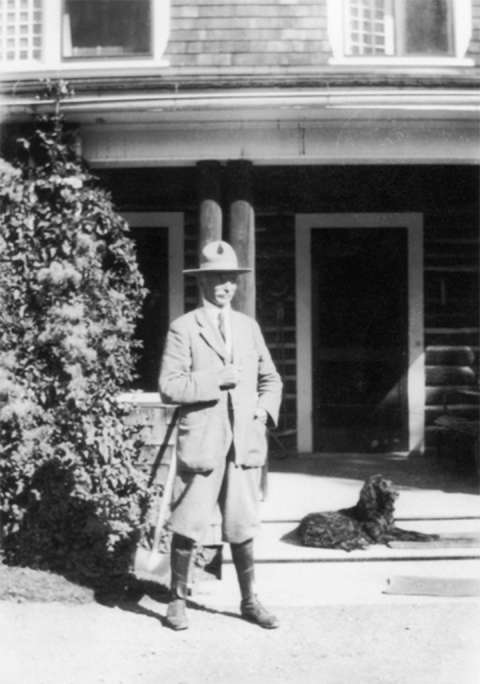
For the Boer War contract, the Moncreiffe brothers engaged buyers to look for suitable horses in 10 western states. Oliver Henry Wallop, son of the fifth Earl of Portsmouth, and grandfather of Wyoming's U.S. Sen. Malcolm Wallop, owned a ranch adjacent to the Moncreiffes', and bought horses in the Pacific Northwest. Wallop, along with Robert Walsh, another horse buyer for the Moncreiffes, joined with the two Moncreiffes to sell horses to the British.
Horses purchased within 100 miles of Sheridan were usually trailed overland, and the rest were freighted in by the Burlington railroad. In the earliest days of the horse-buying boom, things appear to have been chaotic, with local and regional ranchers bringing in every horse they thought they could sell—to Sheridan, which would explain why Bard’s bronc was bucking on city streets.
Soon, horse-breaking operations moved to the Moncreiffe ranch. Many local cowboys, Bard included, worked there, breaking the wilder horses until they were gentle enough to pass inspection by the buyer for the British Army.
The army buyers paid $40 per head for broken horses. This was a tenfold increase over the price for a driving horse or ranch stock just a few years previously, when probably the only horses that brought more than $4 each were highly trained polo ponies or other recreational mounts. Prices had fallen so low in part because electric streetcars reduced the demand for horses in cities. By 1902, prices for war horses appear to have risen; a full-page advertisement placed by A.B. Clarke of Sheridan in the July 19, 1902, Sheridan Enterprise shows that $100 was paid for a horse at a recent sale in Miles City, Mont. Another horse, an "old pony" clearly not sold for war, brought $12.
During the flurry of Boer War buying, Sheridan teemed with horse sellers and bronc riders, and at the end of most days, the horses were trailed the short distance to the Moncreiffe ranch for breaking and inspection. In summer 1901, there were horse inspections at the Moncreiffe ranch almost every day. Late that fall, the company moved the inspection headquarters to Colorado. The Feb. 1, 1902, Wyoming Industrial Journal reported that the Moncreiffe brothers were holding 500 unbroken horses near Grand Junction, Colo., to be broken for the British. The boom ended sometime in 1902, and the Moncreiffes moved their outfit back to their Big Horn ranch.
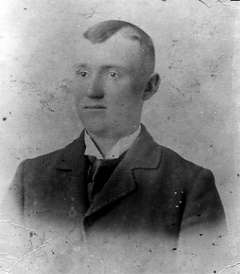
The Moncreiffe brothers, along with Walsh and Wallop, ultimately sold at least 20,000 horses to the British, as noted by Malcolm Moncreiffe in a Feb. 15, 1907, letter to E. MacMillan, Esq., Acting Director of Agriculture, Orange River Colony, South Africa. At $40 per head, that would generate $800,000, a hefty sum, especially in the early 1900s, even after expenses such as buyers' fees, cowboys' pay, commissions to sellers and freight were subtracted.
"During the Moncreiffes' horse-buying and selling," Floyd Bard observed, "nearly every one in the country and in the town were getting Moncreiffe money … The railroad was getting a two-way go at this … They were freightin' horses into Sheridan and freightin' them out in stock cars." Some Sheridan area ranchers paid off their debts, and local businesses of all kinds earned higher revenues.
World War I
In 1910, with war already threatening in Europe, foreign buyers of horses and mules swarmed to the U.S. Not long after the start of the war, at a Fort Worth, Texas, mule sale, a North Fort Worth News reporter counted 15 different army uniforms. Of these nationalities, the British and French definitely reached Wyoming and purchased thousands of horses. Scattered, brief references mention Italian and German buyers in Wyoming as well.
On Nov. 27, 1914, barely three months after Europe went to war, The Sheridan Post reported that two British horse inspectors, Messrs. McNeal and Boze, purchased about 400 head of horses at "the [Moncreiffe] Polo ranch near Big Horn." By early spring 1915, inspection ads and news reports of horse sales were appearing regularly in the Sheridan Post, the Cheyenne State Leader and the Wyoming Tribune.
Bard, now a buyer for the firm of Moncreiffe, Wallop and Walsh, traveled to Crawford, Neb., and Sundance, Wyo., purchasing cavalry horses for approximately $125 or less; light-artillery horses for about $150; and heavy-artillery horses for as much as $165. Oliver Wallop traveled to Washington and Oregon—and probably points in between—as well as throughout Wyoming, to find the best horses.
War horses were separated into three classes: cavalry; light artillery and heavy artillery. Artillery horses were used for hauling. Mounted troops rode cavalry horses, which had to be dark enough for camouflage. Grays were sometimes acceptable, especially to the French, and more so as the war continued. All horses had to be between 5 and 10 years old; between 15 and 16 hands high, measuring, that is, 60 to 64 inches from the ground to the highest point of the animal’s withers, depending on the class; and must weigh between 950 and 1,250 pounds or more.
Malcolm Moncreiffe's account ledgers for 1915 reveal that the company had at least nine more buyers in addition to Bard and Wallop. From April 16 through July 29 of that year, Moncreiffe and company sold more than 3,400 horses to the British and French, for a total of at least $612,935. The Moncreiffes continued to sell horses well into 1916, as their advertisements in the July 9, August 1 and September 13 Sheridan Daily Enterprise show.
No records are available for Carey Brothers and Davis, Cheyenne-based horse dealers who advertised at least once, in the June 25, 1915, Cheyenne State Leader, publishing prices similar to the Moncreiffes'. The Careys were longtime ranchers with bases at the enormous CY Ranch at Casper and elsewhere. In their ad, Carey Brothers and Davis also listed various sales locations, including Medicine Bow, Rawlins, Green River, Evanston and Opal—all railroad towns—with dates ranging from July 1 through July 24.
Joseph Michener, whose name the newspapers sometimes misspelled as Mitchener, was another buyer who secured several large contracts with the British and French in 1915 and 1916. Michener was from Council Bluffs, Iowa, but sold so many horses from Cheyenne and Medicine Bow that he had to set up an office in the Plains Hotel in Cheyenne for correspondence and bookwork. The Aug. 1, 1915, Wyoming Stockman-Farmer listed nine pages of inspection certificates—nearly all issued to Michener for shipments in July—signed by Laramie County Sheriff Frank B. Roach. In July alone, Michener dealt with about 90 owners and shipped approximately 2,700 horses from Cheyenne to several different points in the east, including Newport News and "Northfork", Va., (possibly the paper meant Norfolk, which, like Newport News, was a port) and "New York," probably New York City.
Michener also traveled to Sheridan at least once: On July 30, 1915, an account in The Sheridan Post stated, "Members of the French board of inspectors, headed by Joseph Michener, will arrive in Sheridan Sunday." The French and British may not have been his only customers; The Wyoming Press in Evanston reported on Sept. 2, 1916, that Michener put in a bid to furnish 35,000 head of horses to the U.S. government as well.
Horse-selling went on in winter as well as summer, as illustrated by a worried-sounding article in the Nov. 18, 1915, Cheyenne State Leader: "Every possible means are being employed to keep Cheyenne as an inspection point for the Michener Horse company … [which] has a salary pay-roll of approximately $800 a week."
Michener did move his headquarters to Denver for the winter because the stockyards there were better suited for winter sales. However, he advertised a one-day-only sale in the Jan. 13, 1916, Wyoming Tribune and a few months later, placed more ads in the same publication on April 1, June 21, and June 24.
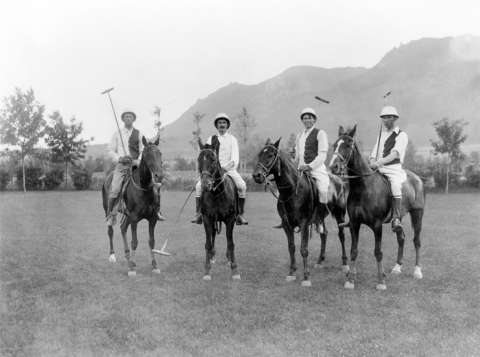
Michener was apparently a shrewd and aggressive businessman. At a Medicine Bow sale advertised by Carey Brothers and Davis, the Laramie Boomerang reported on June 8, 1915, Carey Brothers offered to buy "horses for the British army subject to the inspection test." This was the standard procedure. Right before the sale, "an agent for Mr. Mitchener [sic] … appeared on the scene and offered to buy the horses placed on sale without the formality of inspection." Michener's agent, whom the paper did not name, bought 120 head. The article continued, "Messrs. Carey Bros. and Davis refused to buy a horse without inspection … [and] had to withdraw from the sale."
All told, from spring 1915 through summer 1916 and possibly beyond, Michener probably sold tens of thousands of horses and had "made a fortune" by Nov. 3, 1916, when the Cheyenne State Leader invited him to speculate about presidential candidate Woodrow Wilson's chances in the upcoming election. Michener predicted a landslide.
The horse dealing by Moncreiffe, Wallop and Walsh; Michener and his many agents; Carey Brothers and Davis as well as numerous lesser dealers, peaked sometime in 1916, if press reports and extant newspapers are a reliable indicator.
The U.S. Army Remount Service
Buying for the Boer War, and again during World War I, depleted the national supply of military-acceptable mounts. The U.S. Army's standards were similar to those of World War I foreign buyers, except that the U.S. military wanted geldings only. Stallions in a group fought with each other, and the presence of mares stirred up stallions and geldings alike.
The Army had been struggling with a shortage of good horses for decades, perhaps for more than half a century before World War I. Not enough horses suitable for military purposes were being bred, and the U.S. Army Remount Service was established to ensure a good supply.
Activated in 1908, the Remount began as a procurement program for horses and mules, and that year, Sheridan, Wyo., was designated as one of seven towns with national purchasing boards whose function it was to locate and buy good horses. In 1921, Congress appropriated $250,000 to continue and further organize Army-sponsored horse breeding. The cornerstone of this program was the availability of government-owned, thoroughbred stallions, which were leased to civilian horse owners to breed to their own mares. Offspring were the property of the mare's owner and could be sold to any buyer, military or not. Thus, Army officials hoped to facilitate the production of excellent foals over a period of decades, creating the pool of mounts they needed.
For maintenance and distribution of stallions, plus purchasing and care of colts, the Army established three permanent Remount Depots: in Front Royal, Va.; Fort Reno, Okla.; and Fort Robinson, Neb. The Remount Service also designated seven different "Remount Areas" nationwide, each with its regional headquarters, which, though temporary, served the same function as the three depots.
The program met its goal. In the first decade, from 1921-1931, 644 stallions were leased in 40 states, including Wyoming; 185,000 mares were bred and nearly 127,000 foals were produced. In the 1930s, the annual procurement of foals was between 1,500 and 2,500, and by 1941, the number of stallions had peaked at 700. At least 70 Wyoming farmers and ranchers from all parts of the state leased remount stallions. No Wallops or Moncreiffes appear on the lists of stallion agents. Records of sales by state are unavailable, however, so drawing an accurate picture of the economic impact on Wyoming is difficult.
In August 1942, the Northwestern Remount Regional Headquarters was moved from Salt Lake City to Sheridan, "to be closer to the center of the horse-raising area," according to a report in the Aug. 14, 1942, Sheridan Press. Larger facilities, such as the depot at Fort Robinson, Neb., had quarters for officers and enlisted men, extensive stables, paddocks and corrals, a veterinarian plus a quarantine area/animal infirmary, and a complete setup for processing incoming animals and shipping them out again.
The much scaled-down headquarters at Sheridan had an administration building, stallion stable and caretaker's quarters. Two officers were on staff, as well as clerical workers and stable hands. "[N]o purchasing is being done at the present time," reported the Sheridan Press on Dec. 13, 1942. "However," it continued in booster-style optimism, "indications point to the fact that the horse in this … [war] is still an important factor."
Horse lovers in the Army tried to keep the Remount Service active, but mechanization had been reducing the demand for horses and mules for decades. In 1948, the project was transferred to the U.S. Department of Agriculture and formally ended in 1949.
After military horse sales
In fall 1915, Floyd Bard became foreman of the Moncreiffe ranch, and through the war years managed other area ranches as well. Next he worked as a guide for local dude ranches, escorting parties of guests on horseback through the Bighorn Mountains. He also trapped coyotes for the state government.
In 1918, after the big sales of World War I, Malcolm Moncreiffe, who had been raising sheep for 20 years, began buying registered sheep, importing Corriedales from New Zealand. His friend, business partner and neighbor, Oliver Henry Wallop, became seventh Earl of Portsmouth on the death of his older brother in summer 1925. To accept the title, Wallop had to renounce his American citizenship and move back to England. However, he returned to Wyoming often, and his son, Oliver Malcolm, father of future U.S. Sen. Malcolm Wallop, took over the ranch.
Horses continued to contribute some to Wyoming's economy, especially in and near the town of Big Horn, where cowboys and the Moncreiffes, Wallops and other wealthy British and American ranchers started playing polo in the 1890s—and polo continues there today. As always, Wyoming's high altitudes, rugged terrain, abundant grass and sunshine combined to produce superior mounts, whether for war, games, regular ranch work or high-dollar pack trips in the mountains.
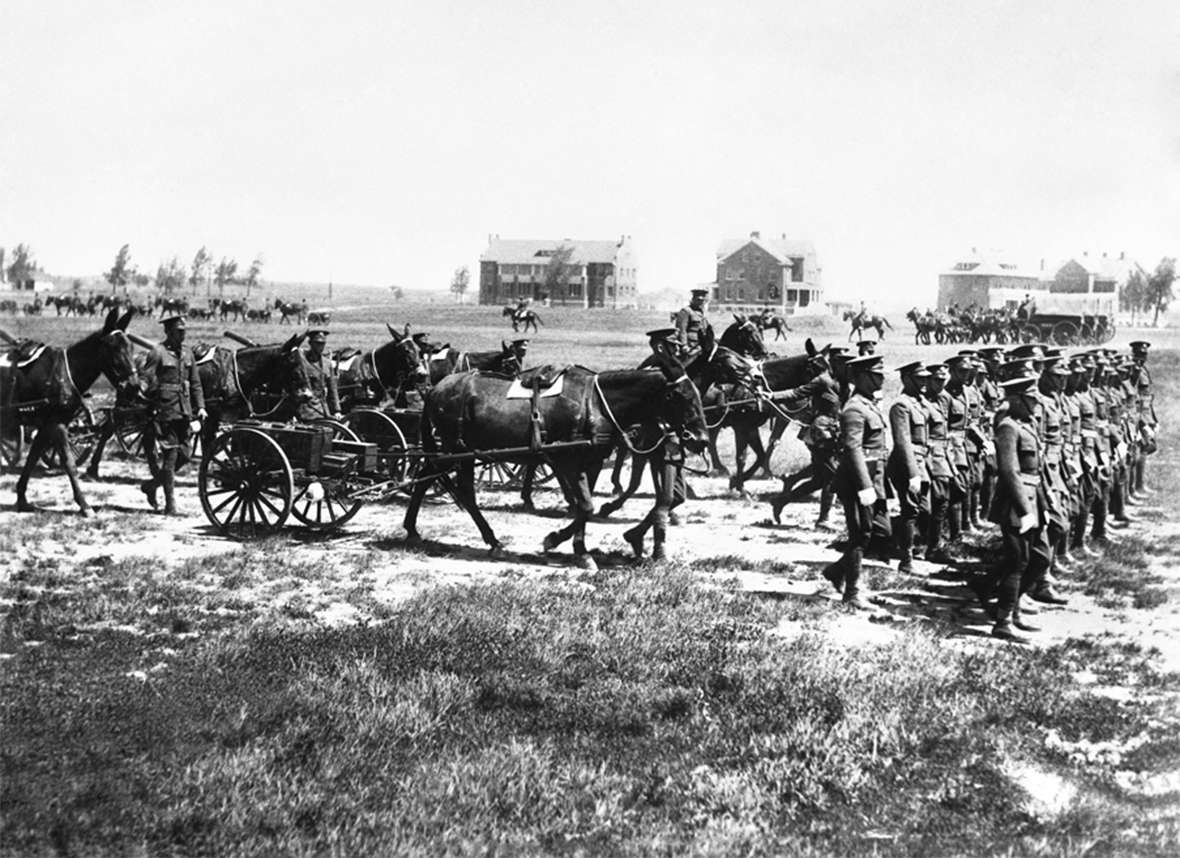

Resources
Primary Sources
- Wyoming Newspapers. Accessed Oct. 22, 2015, and Jan. 20-21,2016, at http://newspapers.wyo.gov:
- Cheyenne State Leader, June 25, 1915; Aug. 15, 1915, Nov. 18, 1915; Nov. 3, 1916.
- Laramie Boomerang, June 8, 1915.
- Laramie Republican, July 18, 1916
- Sheridan Enterprise, July 19, 1902; March 30, 1915.
- Sheridan Daily Enterprise, July 9, 1916; July 13, 1916; Aug. 1, 1916; Sept. 13, 1916; April 30, 1918.
- Sheridan Post, Nov. 27, 1914; July 30, 1915; Oct. 1, 1915; Oct. 12, 1916; Oct. 15, 1915.
- Weston County Gazette, Nov. 25, 1915.
- The Wyoming Industrial Journal, Oct. 1, 1900; Feb. 1, 1902.
- The Wyoming Press, Sept. 2, 1916.
- Wyoming Stockman-Farmer, June 1, 1915, 10; Aug. 1, 1915, 12, 14-21.
- Wyoming Tribune, May 17, 1915; Nov. 23, 1915; March 13, 1916; April 30, 1915; Aug. 24, 1915; Jan. 13, 1916; April 1, 1916; June 21, 1916; June 24, 1916.
- Moncreiffe, Malcolm. Letter to E. MacMillan, Esq., Acting Director of Agriculture, Orange River Colony, Feb. 15, 1907. Box 3, "Correspondence, No dates-1920 Dec.," Folder 1903-1917, Malcolm Moncreiffe Collection, Collection 376, American Heritage Center, University of Wyoming, Laramie, Wyo. (hereafter AHC).
- ———. Statements, ledger sheets, balance sheets and horse inspection reports, 1915. Box 1, "Ledgers & Journals," Malcolm Moncreiffe Collection, Collection 376, AHC.
- Sheridan Press, Jan. 27, 1942; June 14, 1942; Aug. 2, 1942; Aug. 14, 1942; Dec. 13, 1942; June 2, 1943; Aug. 28, 1944; April 28, 1945. Newspaper collection, Wyoming Room, Sheridan County Fulmer Public Library, Sheridan, Wyo.
- ———, "Malcolm Moncrieffe [sic], Pioneer Sheepman, Dies at Ranch Home," June 14, 1948. Biographical File, AHC.
- U.S. Army, Office of the Quartermaster General. Distribution of Remount Stallions by States for the 1941 Breeding Season. Quartermaster Museum, Fort Lee, Va.
- ———. Distribution of Remount Stallions by States for the 1942 Breeding Season. Quartermaster Museum, Fort Lee, Va.
- ———. Distribution of Remount Stallions by States for the 1943 Breeding Season. Quartermaster Museum, Fort Lee, Va.
Secondary Sources
- Amundson, Michael A. "The Mink and Manure Crowd: The History of an Elite Subculture in Wyoming." Master's thesis, University of Wyoming, 1990, 50-52, 67, 85-87, 91-97.
- ———"'These Men Play Real Polo': An Elite Sport in the 'Cowboy State,' 1890-1930." Montana: The Magazine of Western History, 59 no. 1 (Spring 2009): 3-23, 92-93.
- Bard, Floyd. Horse Wrangler: Sixty Years in the Saddle in Wyoming and Montana. As told to Agnes Wright Spring. Norman, Okla.: University of Oklahoma Press, 1960, 200-220, 246-258, 280-284.
- Blair, Pat. "County Provided Many Horses for War." Sheridan Chronicles: History Revisited. May 5, 2015. Sheridan, Wyo.: Sheridan Media Publications, 16. Accessed March 4, 2016, at http://www.sheridanmedia.com/bounty/countrybounty/sheridan-chronicles/.
- Buecker, Thomas R. Fort Robinson and the American Century, 1900-1948. Norman, Okla.: University of Oklahoma Press, 2004, 24-47.
- Cassity, Michael. "Wyoming Will Be Your New Home ... Ranching, Farming, and Homesteading in Wyoming, 1860-1960." Cheyenne, Wyo.: Wyoming State Historic Preservation Office, 2011, 206-207. Accessed March 4, 2016, at http://wyoshpo.state.wy.us/homestead/pdf/historic_context_study_011311.pdf.
- Drybrough, T.B. Polo, rev. and enl. London, N.Y., Bombay: Longmans, Green, and Co.: 1906, 5, 6, 63, 343.
- Farquhar, Brodie. "Sheridan County, Wyoming." Accessed March 4, 2016 at /encyclopedia/sheridan-county-wyoming.
- Garber, Vie Willits. Big Horn Pioneers. Rev. ed. Big Horn, Wyo.: Big Horn Public Schools, 1961, 58, 61.
- Gressley, Gene, archivist. "Malcolm Moncreiffe Collection." Undated news release. Box 18, "Miscellaneous Documents," Malcolm Moncreiffe Collection, Collection 376, AHC.
- King, Bucky. The History of Big Horn Polo. Sheridan, Wyo.: Still Sailing Publications, 1987, 8-11, 33-34.
- Larson, T.A. History of Wyoming. 2d ed., rev.. Lincoln, Neb.: University of Nebraska Press, 1978, 326, 452-454.
- Livingston, Phil and Ed Roberts. War Horse: Mounting the Cavalry with America's Finest Horses. Albany, Texas: Bright Sky Press, 2003, 15-87, 266, 275, 288.
- Morton, Sam. Land of the Horse: The Art and Photography of Absaraka. Sheridan, Wyo.: Sheridan County Fulmer Public Library Publishing, 2009, 63-67, 85.
- ———. Where the Rivers Run North. Sheridan, Wyo.: Sheridan County Historical Society Press, 2007, 179-440.
- Mott, Rebecca Colnar. "Polo, ranching and family: Connells combine disciplines." Wyoming Livestock Roundup. Accessed March 4, 2016 at http://www.wylr.net/component/content/article?id=3644:polo-ranching-and-family-connells-combine.
- Poeske, Dale A. "Wyoming in World War I." Master's thesis, University of Wyoming, 1968, 33-34.
- Proulx, Annie, ed. Red Desert: History of a Place. Photography by Martin Stupich. Austin, Texas: University of Texas Press, 2008, 333-338.
- Sheridan County Extension Homemakers Council. Sheridan County Heritage Book. Sheridan, Wyo.: Sheridan County Homemakers Council, 1983, 918.
- U.S. War Department. Remount. Technical Manual 10-395. Prepared under direction of the Quartermaster General. Washington, D.C.: 1941, 2-3, 43-46.
- Waller, Anna L. "Horses and Mules and National Defense." Office of the Quartermaster General, 1958. Accessed Feb. 24, 2016, at www.qmfound.com/horse.htm#Location%20of%20Remount%20Depots.
- Woodward, John. "Exhibit Showcase—Over There: Military Animal Breeding Along the Bighorns." The Log (Sheridan County Historical Society and Museum) 6 no. 4 (Spring 2015): 1, 6.
Field Trips
- The Moncreiffe ranch was sold to Bradford Brinton in 1927, and is now the Brinton Museum. For more information, see the listing below.
Illustrations
- The J.E. Stimson photo of the Moncreiffe Ranch and the photos of Oliver Wallop, Malcolm Moncreiffe and three other polo players, and of the machine-gun and artillery companies are all from Wyoming State Archives. Used with permission and thanks.
- The photo of Floyd Bard is from the Bard collection from the Big Horn City Historical Society at the Wyoming Room at the Sheridan County Fulmer Public Library. Used with permission and thanks.
